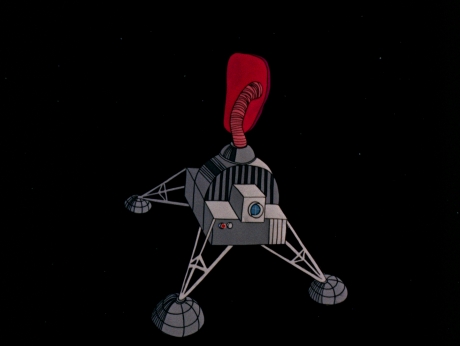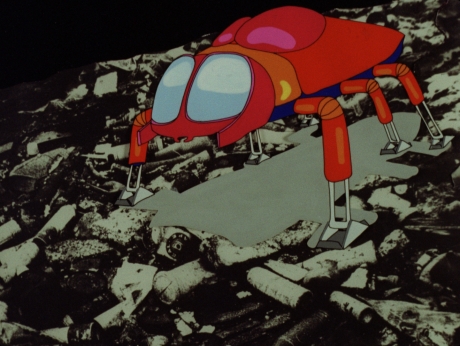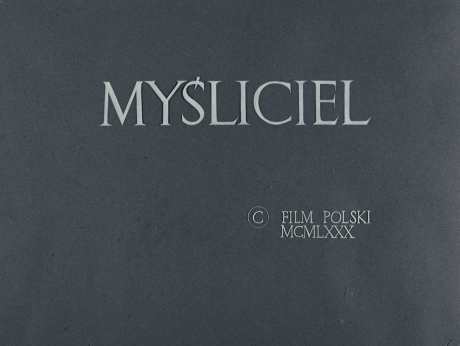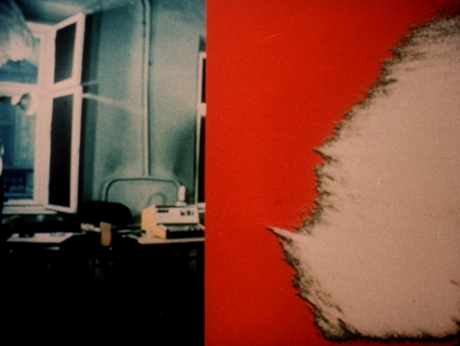
 overview
overview

 storyline
storyline
First a cube appears, flying quickly into the depth of the screen. A ball bowls through a spatial maze connecting with another ball on its way. Again a cube flies by and from a further bowl four ‘live’ elements constantly changing their shapes appear. Constant motion, a continuously renewable rhythm creates further, richer structures. The pathways of the next balls get longer and more complicated. After completing the pathway some of them crash into the edges of the structure built out of cubes, some become cubes themselves and create an even more complicated space structure. Suddenly two balls connect, creating an incredibly expansive red matter, which flows over the patiently built geometrical worlds. The effect of the catastrophe is a… cube, the original element of the non-existent now structures. The whole process begins anew.

 comment
comment



















Krzysztof Kiwerski is an artist who creates timeless stories about universal matters and thinks primarily in images. This was the case in his science-fiction debut ‘Breakdown’ (1975), in the impression inspired by a fragment of Shakespeare’s famous drama ‘Richard III’ (1976), as well as in his third film called ‘Chance?’ (1977). The image itself evolves in Kiwerski’s films: in ‘Breakdown’ the artist uses ‘presenting’ visuals, which have illustrational functions above all, in ‘Richard III’ a more experimental form is used, which revives static graphic forms, while in ‘Chance?’, in order to present a traditional story with a cause and effect logic, the director used geometrical visual forms, which made the story even more universal. An expressive soundtrack composed of electronic music by Marek Wilczyński, natural effects (murmurs) and elements of silence helped to achieve this. Due to a harmonious cooperation of these two artists an incredibly interesting and impressively perfect impression about a journey of matter through time and space was created. When watching ‘Chance?’ it is important to remember that it was made in 1977, times before computers, and was made with traditional methods. The same case was with a film made three years later and awarded with an Oscar, the ‘Tango’ (1980) by Zbigniew Rybczyński.
Jerzy Armata
Kiwerski revived his abstract geometric compositions painted in the middle of the 70s in his film ‘Chance?’ (1977). A stereo-metric construction suspended in space has sterile canals through which individual balls run. Below them there is a valley of regular cubes (…). The anecdote layer of the film can be interpreted in the context of a famous essay by Jacques Monod ‘Chance and Necessity: An Essay on the Natural Philosophy of Modern Biology’, which was written seven years before the making of the film. In this book J. Monod describes the views of science, which interprets the world as a deterministic machine which realises a program strictly specified by initial conditions. That is why the only way to understand the creation of life is to invoke to chance. (…) In the film itself there is no answer to the question if the animation of forms taken from his own paintings was a pretext to visually interpret the theory of an accidental coincidence enabling the creation of life, or if the scientific theory was used as a literary pretext to find its visual equivalent? Whichever of these is true, a painting masterpiece, who’s forms chance in the tact of an inner, dramatic rhythm has been made on film tape.
Wojciech Mischke, Fantazja, sztuka i nauka, Kino”, 1985, nr 6